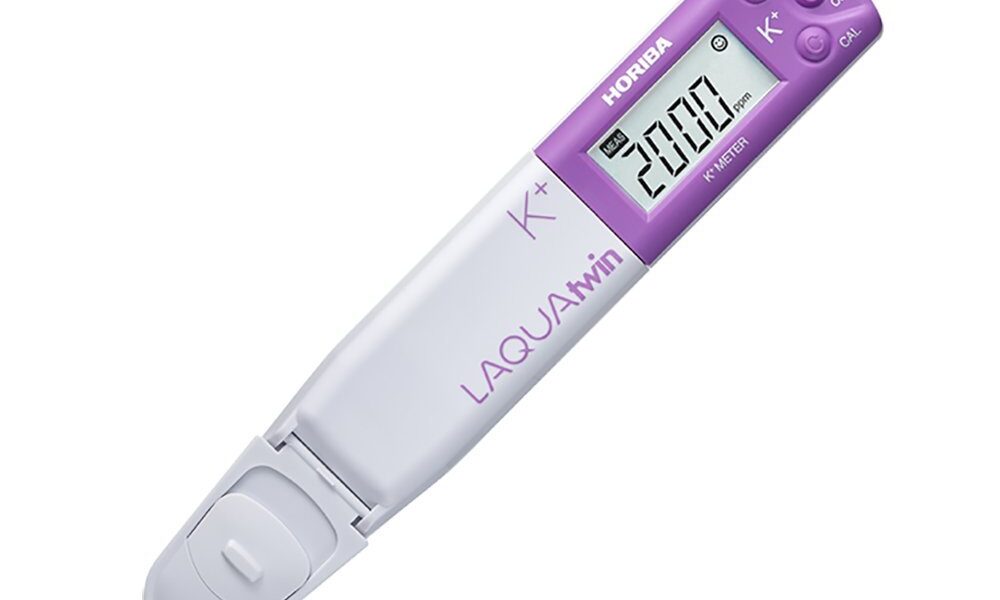The achievement of adequate ion concentrations in nutrient solutions, media and plant tissue is key to success in hydroponics. It is therefore important to measure them, so that proper values can be maintained. Up until now, this has been mostly achieved with the use of external lab testing but electrochemical developments made during the past 10 years have made the production of ion selective electrodes with high enough selectivity coefficients viable at a large scale. This means that it is now possible to obtain sensors that yield accurate enough measurements of nitrate, potassium and calcium concentrations, which allows for routine monitoring of these values without having to worry too much about complicated electrode calibration that accounts for selectivity issues. In today’s article I am going to be talking about these electrodes and how they can be used in hydroponic crops.

An ion selective electrode is an electrochemical device that is sensitive to the concentration of a single ion in solution. This is commonly achieved by coating an electrode with a molecule that can uniquely accommodate that ion, so that the potential measured across that electrode and a reference electrode will change proportionally to the concentration of that ion. A pH electrode achieves this effect with glass – a pH electrode is basically an H3O+ ion selective electrode – while to sense other ions the use of other molecules is required. For example Valinomycin – a molecule originally developed as an anti-biotic – is able to accommodate K+ ions very selectively, reason why an electrode coated with a Valinomycin containing membrane will be sensitive to changes in K+ concentration.
The issue with using these electrodes in hydroponics has always been two fold. First, the electrodes were commonly very expensive (thousands of dollars per electrode) and second, the selectivity of the electrodes was limited enough that the concentrations of other ions in hydroponic solutions caused substantial interference. This meant that accurate use in hydroponics required someone with analytical chemistry training that would calibrate the electrodes to variations in a single ion against a more complicated ionic background, a process which greatly limited the applicability of the technology. However, companies like Horiba have now developed electrodes that overcome both of these issues, with electrodes that have high selectivity coupled with very attractive prices. You can see Horiba’s ion selective electrodes for potassium, calcium and nitrate in the links below. These electrodes are very simple to use and come with solutions to perform 2 point calibrations which are good enough given their high selectivity.
Note that Horiba is not sponsoring this content, but the links below are amazon affiliate links that will help support this blog at no extra cost to you, if you decide to purchase them.
Are these electrodes good enough for hydroponics? The answer is, yes! This independent Spanish research thesis looked at the use of two different brands of ion selective electrode for the determination of potassium, calcium and nitrate in hydroponic solutions. Their results show that the Horiba probes achieve good accuracy in the determination of all of these ions, correlating very well with lab measurements of the same nutrient solutions. With these probes you can therefore monitor the concentrations of K, Ca and N as nitrate as a function of time, giving you substantial information about the accuracy of your solution preparations and – probably most importantly in the case of Ca – information about how your water supply calcium content is changing through time, which can be very important if you’re using tap water to prepare your hydroponic solutions. The determinations are instantaneous, which gives you the ability to quickly react, without the need to wait for a long time for lab analysis to come back.

Another very interesting use of these ion selective electrodes is for the monitoring of plant sap to measure nutrient concentrations in tissue. This can be achieved by collecting petiole tissue from mature leaves to perform an extraction – using a garlic press – which then generates sap that can be measured directly using the electrodes. This gives you the ability to perform a lot of tissue measurements, allowing you not only to look at nutrient concentrations of a single plant, but to monitor tissue concentrations from different plants or even different zones in the same plant. You can obtain results from the analysis right away, which allows for much quicker actions to be taken if required. Horiba shows some examples of how this sap analysis can be carried out here.
Although the information given by the above electrodes is not perfect, it has the advantage of being instantaneous and known to correlate very well with lab results measured using ICP. The ability to carry out 10x more analysis and to monitor these three ions way more closely in tissue, nutrient solutions, run-off, foliar sprays, etc, opens up a lot of ways to improve crop nutrition and to see problems coming way before they become major issues. Imagine being able to monitor the K, Ca and nitrate concentration in your solutions and plant tissue daily, instead of once a week, month or even sometimes even only once per crop cycle, for a fraction of the cost.





